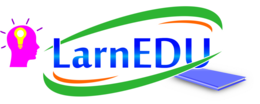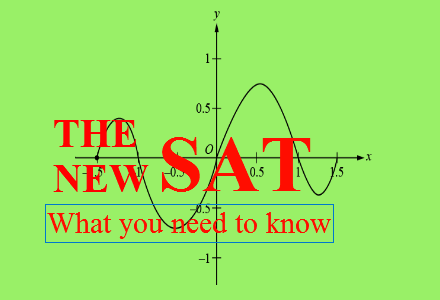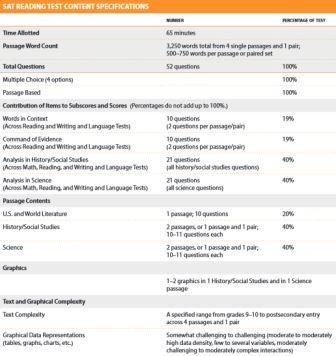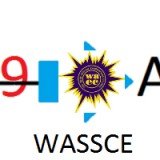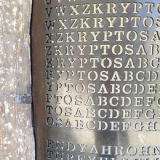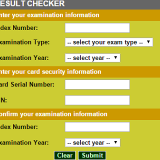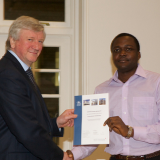16 Key Things Changing On The New SAT
So you want to write the new SAT in 2016? Well, the SAT would be changing. It’ll no longer be as it was for the past 9 years.
The College Board has announced a number of radical changes that’ll be instituted to the redesigned SAT. As a student that’s preparing to write the SAT reasoning test in 2016, it’s crucial you know what you’re going to face.
Don’t get caught unawares when writing the new SAT because the College Board is committed to making the redesigned SAT a leading light in the field of assessment. It will be transparent in design so that all will know what is on it and why. It will be a challenging yet appropriate and fair assessment of what students know and can do. It will continue to measure students’ critical thinking and problem-solving abilities, and retain the strong predictive value that the SAT has long been known for. It will continue to be research driven and evidence based in design and content. It will provide a more comprehensive picture of student readiness than ever before. Finally, it will be an integral part of the College Board’s broader agenda of promoting equity and opportunity.
Here are the major changes that’ll be coming to the redesigned SAT in 2016:
-
Total score would be 1600 instead of 2400
In the old SAT, the total score ranges from 600 to 2400 (200 to 800 for Critical Reading; 200 to 800 for Mathematics; 200 to 800 for Writing). However, in the redesigned SAT, it ranges from 400 to 1600(200 to 800 for Evidence-Based Reading and Writing; 200 to 800 for Math; 2 to 8 on each of 3 dimensions for Essay).
-
Students must use evidence in their answers
In the old SAT, students would select answers from multiple choices to demonstrate their understanding of the text.
However, in the new SAT, students are required to interpret, synthesize, and provide evidence from a passage in support of their answers.
The passage could be from a wide range of sources. These include informational graphics, such as tables, charts, and graphs, as well as multi-paragraph passages in the areas of literature and literary nonfiction, the humanities, science, history, and social studies, and on topics about work and careers.
For every passage or pair of passages students read on the Reading Test, at least one question asks them to decide which part of the text best supports the answer to the previous question. In other cases, students will be asked to integrate the information conveyed through words and graphics in order to find the best answer to a question.
Questions on the Writing and Language Test will also focus on command of evidence. Students will be asked, for example, to analyse sequences of sentences or paragraphs to make sure they are logical. In other questions, students will be asked to interpret graphics and to edit a portion of the accompanying passage so that it clearly and accurately conveys the information in the graphics.
The SAT Essay will also require students to demonstrate command of evidence. Students analyse a provided source text to determine how the author builds an argument to persuade an audience through the use of evidence, reasoning, and/or stylistic and persuasive devices. They’re asked to write a logical and clear analysis supported by critical reasoning and evidence drawn from the source.
-
Vocabulary will be more practical.
The new version of the SAT will not require you to memorise the meaning of every word in the dictionary. The College Board has made the decision to focus on vocabulary words that students will encounter on regular basis in College and in future jobs.
According to the College Board:
No longer will students use flashcards to memorize obscure words, only to forget them the minute they put their test pencils down. The redesigned tests will engage students in close reading and honour the best work of the classroom.
-
Math section will cover fewer topics
The old SAT Math section had only a few questions for each topic (algebra, geometry, etc.). The new math section will focus on fewer math topics that students must know more in depth. These are problem solving and data analysis, heart of algebra, and passport to advanced math.
According to the College Board:
Problem Solving and Data Analysis is about being quantitatively literate. It includes using ratios, percentages, and proportional reasoning to solve problems in science, social science, and career contexts. The Heart of Algebra focuses on the mastery of linear equations and systems, which helps students develop key powers of abstraction. Passport to Advanced Math focuses on the student’s familiarity with more complex equations and the manipulation they require.
Current research shows that these areas most contribute to readiness for college and career training. They’re used disproportionately in a wide range of majors and careers. In addition to these areas, the SAT, PSAT/NMSQT, and PSAT 10 will include questions on other topics in math, including the kinds of geometric and trigonometric skills that are most relevant to college and careers.
-
Analysis in Science and in History/Social Studies
In the new SAT, students will be asked to apply their reading, writing, language, and math knowledge and skills to answer questions in science, history, and social studies contexts.
According to the College Board:
The assessments will call on the same sorts of knowledge and skills that students will use in college, in their jobs, and throughout their lives to make sense of recent discoveries, political developments, global events, and health and environmental issues.
Students will encounter challenging texts and informational graphics that pertain to the aforementioned issues and topics in the Evidence-Based Reading and Writing section and the Math section. Questions will require them to read and comprehend texts, revise texts to be consistent with data presented in graphics, synthesize information presented through texts and graphics, and solve problems grounded in science and social science contexts.
-
Calculators will be banned from portions of the math section
In the old SAT, students are allowed to use calculators in every section of the Math test. However, in the new SAT calculators are allowed for only some portion of the Math test.
The Math Test has two portions. One is a 55-minute portion comprising 38 questions for which students are allowed to use calculators to solve the problems. The other is a 25-minute portion comprising 20 questions for which students are not allowed to use calculators to solve the problems.
-
Students will not be penalized for incorrect answers
This is one of the coolest changes in the new SAT.
Students used to get a 1/4 point deduction for incorrect answers but no points deducted for skipped answers. New “rights-only” scoring will not penalize students for incorrect answers. Test-takers are thus encouraged to answer every question.
-
Students can choose whether to write an essay
In the old SAT, writing an essay is compulsory. However, in the redesigned SAT, it’s optional, depending on the college the individual is applying to.
-
Essay Analysing
In the old SAT, students are asked to give response to a given prompt.
However, in the new SAT students will be required to read a passage and explain how the author builds an argument to persuade an audience. Students may analyse such aspects of the passage as the author’s use of evidence, reasoning, and stylistic and persuasive elements.
-
Digital SATs will be available
The SAT used to be available in paper only. Beginning in 2016, the new exam will be offered both in print and digitally.
-
Problems Grounded in Real-World Contexts
The College Board promises to make the new SAT to engage students with questions grounded in real world and directly related to the work performed in college and career.
According to the College Board:
The Evidence-Based Reading and Writing section will include questions on literature and literary nonfiction, but will also feature charts, graphs, and passages like the ones students are likely to encounter in science, social science, and other majors and careers. Students will be asked to do more than correct errors; they’ll edit and revise to improve texts from the humanities, history, social science, and career contexts.
The Math section will feature multi-step applications to solve problems in science, social science, career scenarios, and other real-life contexts. Students will be presented with a scenario and then asked several questions about it. This allows students to dig in to a situation and think about it, then model it mathematically.
-
Widely-read founding documents and speeches will be included
According to the College Board “Authors, speakers, and thinkers from the United States and around the world, including Edmund Burke, Mary Wollstonecraft, Nelson Mandela, and Mohandas Gandhi, have broadened and deepened the conversation around such vital matters as freedom, justice, and human dignity. Every time students take an assessment in the SAT Suite, they will encounter a passage from a text from this global conversation. In this way, the assessments will inspire a close reading of these rich, meaningful, often profound texts, not only as a way to develop valuable college and career readiness skills but also as an opportunity to reflect on and deeply engage with issues and concerns central to informed citizenship.
-
Lesser timing
The time for the old SAT test is 3 hours 45 minutes. However, in the new SAT, it’s 3 hours (plus 50 minutes for the Essay [optional])
Lesser components or section
In the old SAT, the components of the test included:
- Critical Reading
- Writing
- Mathematics
- Essay
However in the new SAT, the components of the test included:
- Evidence-Based Reading and Writing
- Reading Test
- Writing and Language Test
- Math
- Essay (optional)
-
Subscore Reporting
The old SAT test didn’t provide sub-score reporting, but in the new SAT, there’s sub-score reporting. Sub-scores provide an added insight for students, parents, admission officers, educators, and counsellors.
-
Essay results would be reported separately
In the old SAT, essay results are scaled to multiple-choice writing. However, in the redesigned SAT, essay results will be reported separately.
-
50-minutes to write essay
In the old SAT, 25 minutes was given for the essay. However, in the redesigned SAT, it’s 50 minutes.
